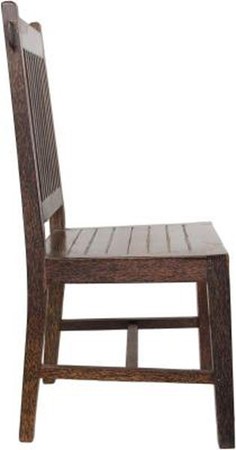A nurse is reinforcing teaching with a client who is 24 hr postoperative following a total hip arthroplasty. Which of the following instructions should the nurse include in the teaching?
Perform range of motion by adducting the hip.
Sit in a straight-backed chair.
Cleanse the surgical incision with hydrogen peroxide.
Apply moist heat to the incision while in bed.
The Correct Answer is B
Choice A reason: Performing range of motion by adducting the hip is an incorrect instruction for a client who had a total hip arthroplasty. Adduction is moving the leg toward the midline of the body, which can cause dislocation of the prosthesis. The nurse should instruct the client to perform range of motion by abducting (moving away from midline), flexing (bending), and extending (straightening) the hip as prescribed by physical therapy.
Choice B reason: Sitting in a straight-backed chair is a correct instruction for a client who had a total hip arthroplasty. This position helps to maintain proper alignment and stability of the hip joint and prevents excessive flexion or rotation that can cause dislocation. The nurse should also instruct the client to avoid crossing legs, bending forward more than 90 degrees, or twisting at the waist.
Choice C reason: Cleansing the surgical incision with hydrogen peroxide is an incorrect instruction for a client who had a total hip arthroplasty. Hydrogen peroxide is a harsh agent that can damage healthy tissue and delay healing. The nurse should instruct the client to cleanse the incision with mild soap and water or as directed by the provider and keep it dry and covered with sterile dressing.
Choice D reason: Applying moist heat to the incision while in bed is an incorrect instruction for a client who had a total hip arthroplasty. Moist heat can increase swelling, inflammation, and infection risk at the incision site. The nurse should instruct the client to apply ice packs or cold compresses to the incision as needed to reduce pain and swelling.

Nursing Test Bank
Naxlex Comprehensive Predictor Exams
Related Questions
Correct Answer is A
Explanation
Choice A reason: This value should be reported to the provider because it indicates an elevated blood urea nitrogen (BUN) level, which can reflect impaired renal function or dehydration. The normal range of BUN is 7 to 20 mg/dL. NSAIDs can cause renal toxicity by reducing blood flow to the kidneys and interfering with their ability to filter waste products.
Choice B reason: This value does not need to be reported to the provider because it indicates a normal hematocrit level, which measures the percentage of red blood cells in the blood volume. The normal range of hematocrit is 38% to 50% for men and 34% to 45% for women.
Choice C reason: This value does not need to be reported to the provider because it indicates a normal total bilirubin level, which measures the amount of bilirubin in the blood that results from the breakdown of red blood cells by the liver. The normal range of total bilirubin is 0.3 to 1.2 mg/dL.
Choice D reason: This value does not need to be reported to the provider because it indicates a normal partial pressure of oxygen (PaO2) level, which measures the amount of oxygen dissolved in the arterial blood. The normal range of PaO2 is 80 to 100 mm Hg.
Correct Answer is B
Explanation
Choice A reason: This is not an appropriate action because using safety pins to secure the pad in place can puncture or damage the pad and cause leakage or malfunction. The nurse should use Velcro straps or tape to secure the pad in place.
Choice B reason: This is an appropriate action because covering the pad prior to use can prevent direct contact between the pad and the skin and reduce the risk of burns or irritation. The nurse should use a clean towel or sheet to cover the pad.
Choice C reason: This is not an appropriate action because applying the pad for 45 minutes at a time can cause tissue damage or necrosis due to prolonged exposure to heat. The nurse should apply the pad for no more than 20 minutes at a time and check the skin condition frequently.
Choice D reason: This is not an appropriate action because filling the pad with sterile water can increase the cost and waste of resources without any benefit. The nurse should fill the pad with tap water as instructed by the manufacturer.
Whether you are a student looking to ace your exams or a practicing nurse seeking to enhance your expertise , our nursing education contents will empower you with the confidence and competence to make a difference in the lives of patients and become a respected leader in the healthcare field.
Visit Naxlex, invest in your future and unlock endless possibilities with our unparalleled nursing education contents today
Report Wrong Answer on the Current Question
Do you disagree with the answer? If yes, what is your expected answer? Explain.
Kindly be descriptive with the issue you are facing.
